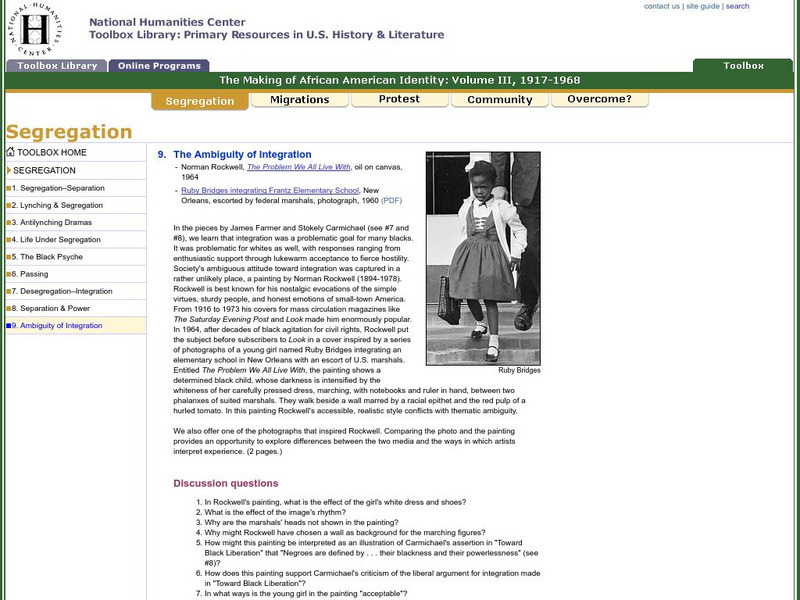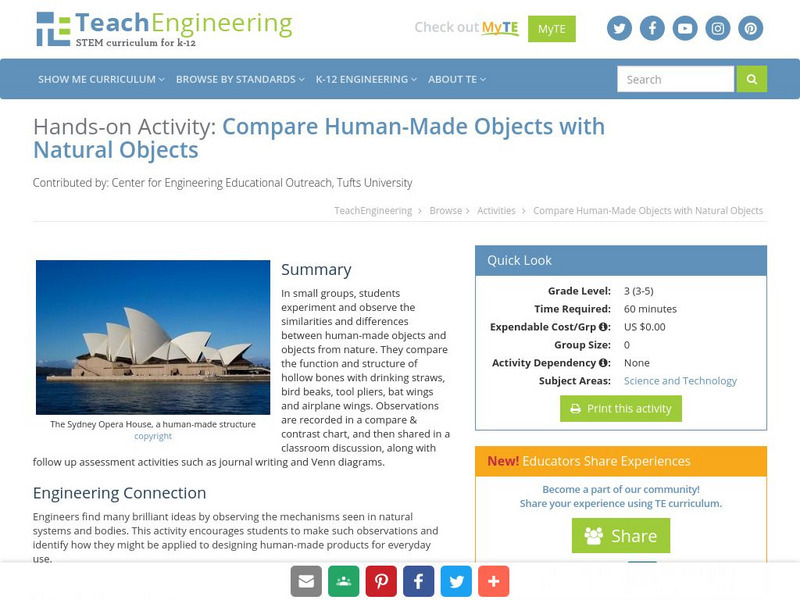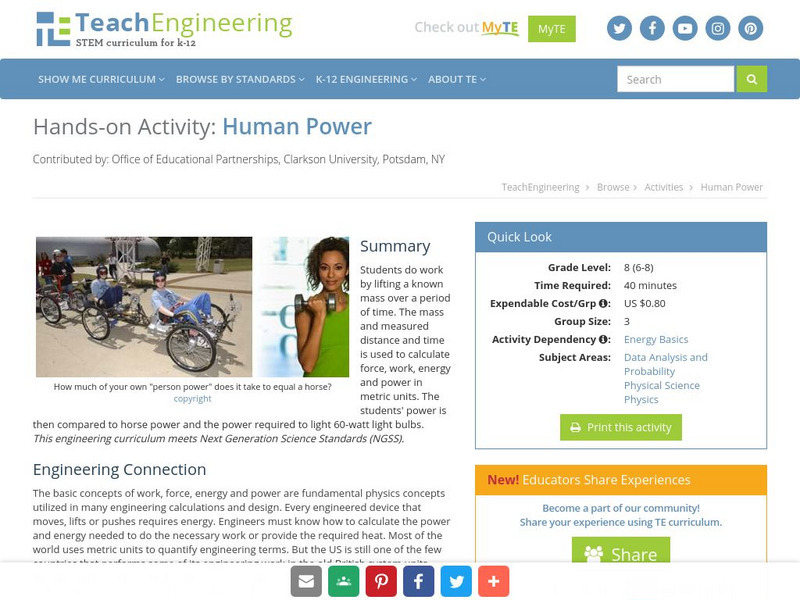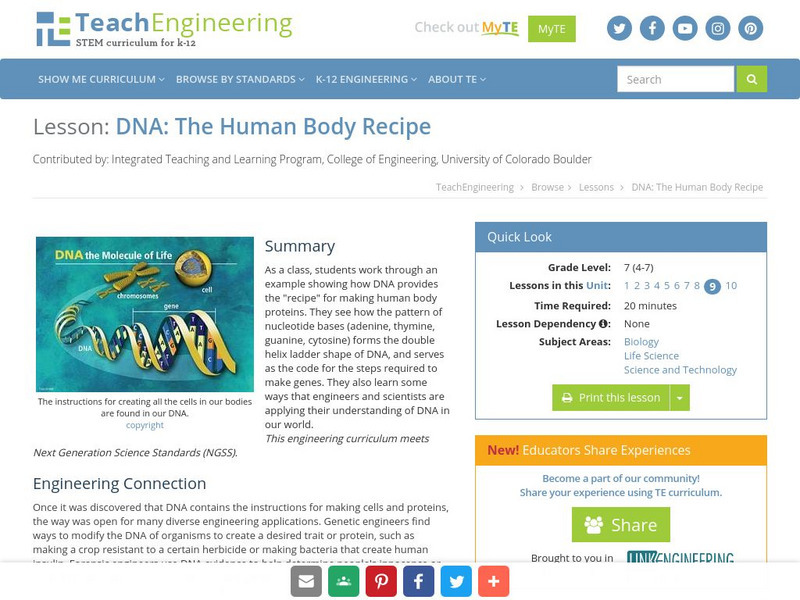Wisc-Online
Wisc Online: Integrity in Work Teams
In this learning module, user will learn to identify the qualities of a person with integrity and the importance of integrity within a work team.
United Nations
Un: Human Rights Council, Warns That Rights Violations "Will Not Disappear."
This 2016 article from the United Nations Human Rights Council chief highlighted the challenges confronting the international community and expressed particular concern over attempts by countries to block human rights scrutiny.
TeachEngineering
Teach Engineering: Engineering and the Human Body
The Engineering and the Human Body unit covers the broad spectrum of topics that make up our very amazing human body. Students are introduced to the space environment and learn the major differences between the environment on Earth and...
TeachEngineering
Teach Engineering: Humans Are Like Robots
Four lessons related to robots and people present students with life sciences concepts related to the human body (including brain, nervous systems and muscles), introduced through engineering devices and subjects (including computers,...
TeachEngineering
Teach Engineering: Biomedical Engineering and the Human Body
Human beings are fascinating and complex living organisms-a symphony of different functional systems working in concert. Through a 10-lesson series with hands-on activities students are introduced to seven systems of the human...
TeachEngineering
Teach Engineering: How Do Human Sensors Work?
This lesson highlights the similarities between human sensors and their engineering counterparts. Taking this approach enables students to view the human body as a system, that is, from the perspective of an engineer. Humans have...
TeachEngineering
Teach Engineering: Reflecting on Human Reflexes
Students learn about human reflexes, how our bodies react to stimuli and how some body reactions and movements are controlled automatically, without thinking consciously about the movement or responses. In the associated activity,...
TeachEngineering
Teach Engineering: Human and Robot Sensors
Students are provided with a rigorous background in human "sensors" (including information on the main five senses, sensor anatomies, and nervous system process) and their engineering equivalents, setting the stage for three associated...
TeachEngineering
Teach Engineering: The Grand Challenge: Simulating Human Vision
Students are introduced to the Robotics Peripheral Vision Grand Challenge question. They are asked to write journal responses to the question and brainstorm what information they require to answer the question. Their ideas are shared...
TeachEngineering
Teach Engineering: Human Water Cycle
Students learn about the human water cycle, or how humans impact the water cycle by settling down in civilizations. Specifically, they learn how people obtain, use and dispose of water. Students also learn about shortages of treated,...
TeachEngineering
Teach Engineering: Understanding Movement in Humans and Robots
This activity helps students understand how a LEGO MINDSTORMS NXT robot moves using motors and wheels. Then students relate the concepts of decision-making actuation and motion in humans to their parallels in mechanized robots, and...
TeachEngineering
Teach Engineering: Movement Task Using Sensors Humans and Robots
This activity helps students understand the significance of programming and also how the LEGO MINDSTORMS NXT robot's sensors assist its movement and make programming easier. Students compare human senses to robot sensors, describing...
SEDL
The Human Body [Pdf]
A large PDF unit that teaches young scholars about the human body systems. Incorporates many activities and integrates math and language arts.
National Humanities Center
National Humanities Center: Toolbox Library: Ambiguity of Integration: Making of African American Identity
A painting and a photograph illustrating some of the problems posed by racial integration. Norman Rockwell's illustration is compared to the experiences of Ruby Bridges.
National Humanities Center
National Humanities Center: Toolbox Library: Desegregation Integration, Making of African American Identity: V.3
This resource presents James Farmer (1920-1999), a major figure in the civil rights movement of the 1950s and '60s, and the distinction he draws between integration and desegregation, two terms often used interchangeably and often confused.
National Humanities Center
National Humanities Center: Toolbox Library: Expansion: Elias Boudinot
The National Humanities Center presents collections of primary resources compatible with the Common Core State Standards - historical documents, literary texts, and works of art - thematically organized with notes and discussion...
TeachEngineering
Teach Engineering: Compare Human Made Objects With Natural Objects
In small groups, students will experiment and observe the similarities and differences between human-made objects and nature. The students will compare the function and structure of hollow bones with drinking straws, bird beaks, tool...
Alabama Learning Exchange
Alex: Human Population Growth Web Quest
This is a technology-based lesson plan that integrates science and math to investigate the dynamics of population growth.
Other
Human and Constitutional Rights: Comparative Constitutional Rights Chart
This Comparative Constitutional Rights Chart is very interesting to check out. The rights are broken into categories, and most of the information is accessed through links, along with additional information.
National Humanities Center
National Humanities Center: Teacher Serve: Segregation
Steven Lawson, Professor of History at Rutgers, explores how racial segreagation changed from before the Civil War up to the 1950s and the differences in segregation between the North and the South. Students should understand the legacy...
TeachEngineering
Teach Engineering: Human Power
Students do work by lifting a known mass over a period of time. The mass and measured distance and time is used to calculate force, work, energy and power in metric units. The students' power is then compared to horse power and the power...
TeachEngineering
Teach Engineering: Rotary Encoders & Human Computer Interaction
Students learn about rotary encoders and discover how they operate through hands-on experimentation. Rotary encoders are applied in tools to determine angle measurements and for translations of angular motion. One common rotary encoder...
TeachEngineering
Teach Engineering: Dna: The Human Body Recipe
As a class, students work through an example showing how DNA provides the "recipe" for making our body proteins. They see how the pattern of nucleotide bases (adenine, thymine, guanine, cytosine) forms the double helix ladder shape of...
Science Struck
Science Struck: Different Branches of Geography
Learn about the many specializations in the field of geography within its two branches of physical and human geography.



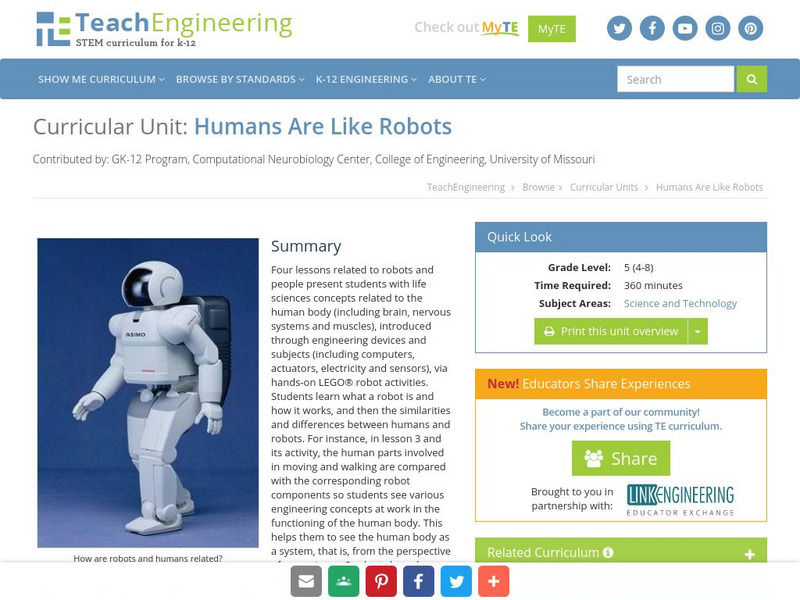




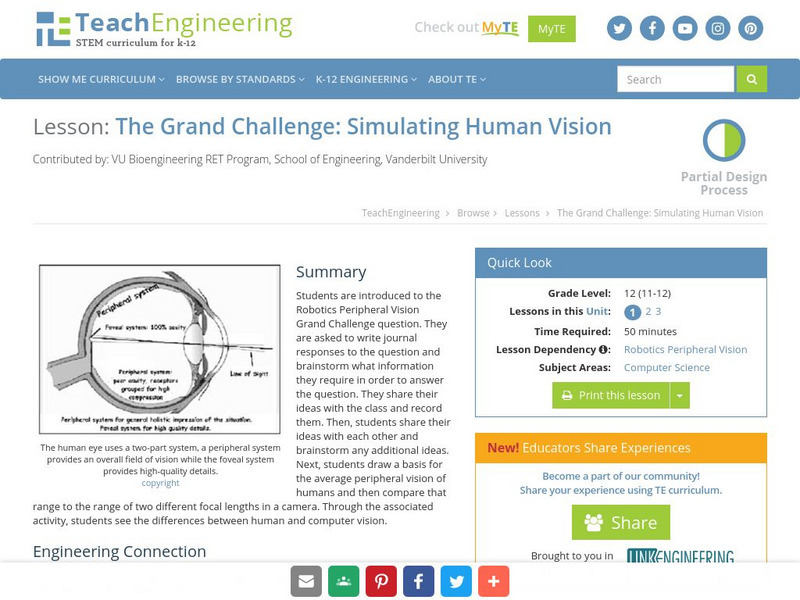


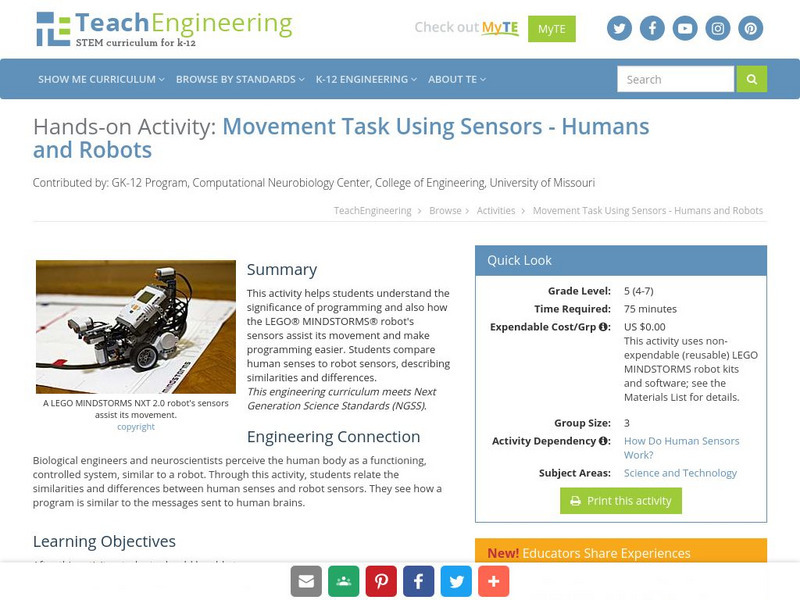
![The Human Body [Pdf] Lesson Plan The Human Body [Pdf] Lesson Plan](https://d15y2dacu3jp90.cloudfront.net/images/attachment_defaults/resource/large/FPO-knovation.png)
